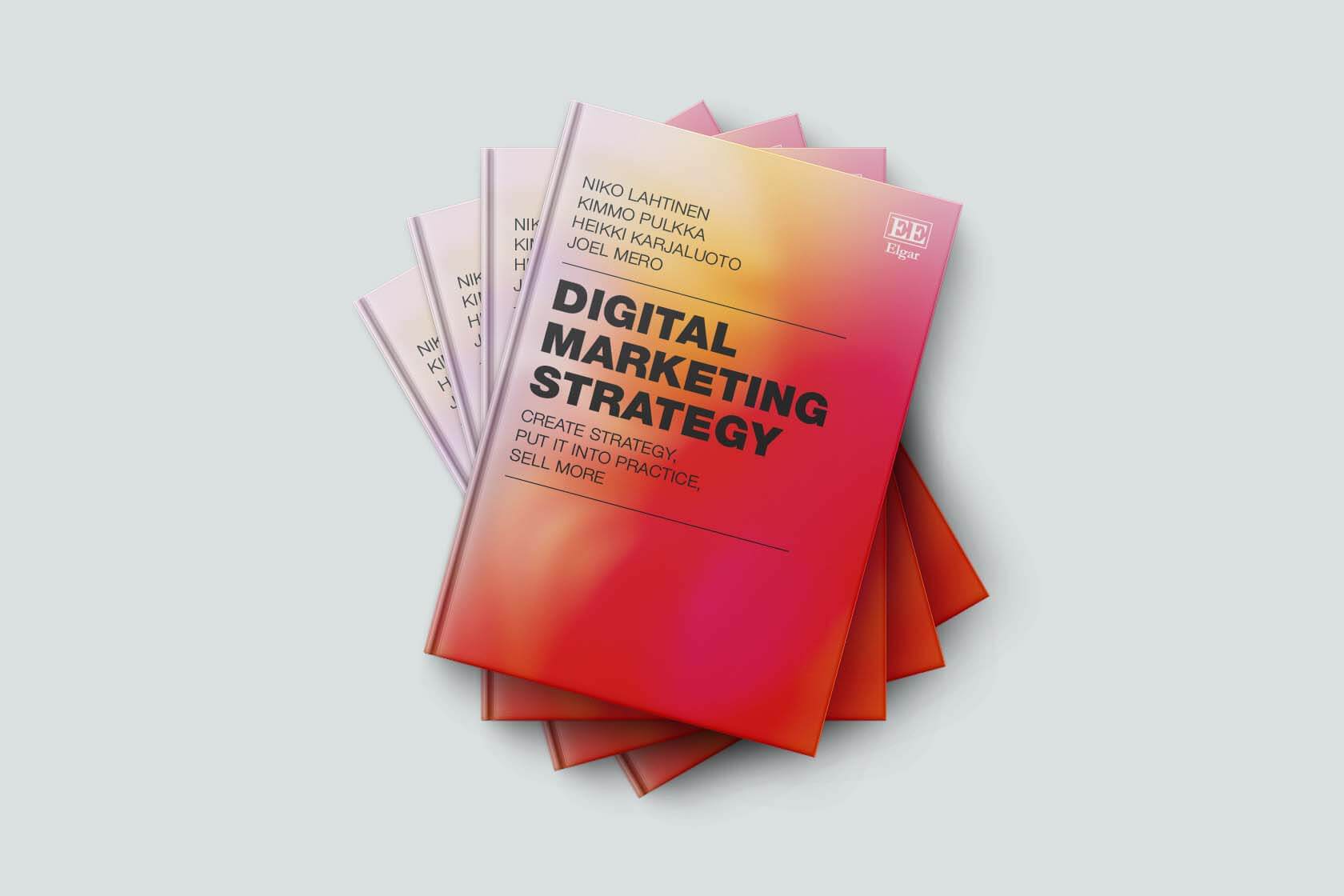The quality of the website’s content determines, among other things, how well Facebook marketing works, how well Google marketing works, how many leads the company receives, how warm these leads are, how many of them buy, and whether email marketing that engages the customer can even be done.
Thus, the entire digital marketing relies on the entire content marketing entity. And its significance is not limited to digital, but companies also direct the flow of visitors to their websites from print, TV, radio, and outdoor advertising. If the content marketing package of the site does not make the customer act as we wish as a last link, the entire marketing process has been practically wasted.
Of course, it is not expected that every site visitor will turn into a customer right away, but content marketing should be compared to an apple tree in these cases. Apples are the individual content that is freely edible to everyone. The more apples we get the customer to eat, the better, because where do you think the customer will come looking for food when they get really hungry?
With SDM, we use lead mills made of content for this process. Their purpose is to communicate the value the company brings to the site visitor in a clear and distinctive way, so that the potential customer begins to want the value that the company generates, and not just the cheapest price in the industry.
“Services with the same name from competing companies often bring very different value to the customer. The problem is that services with the same name, but at different levels, are identically reported on companies’ websites. In this way, the customer naturally chooses the cheapest service, and not necessarily the most suitable one for them.
Lead mills are practically strategic content entities that transport customer information from a site visitor seeking information to a committed customer.
It is all for nothing if you do not know your buyer personalities.
The entire content of the article or video is completely useless if we cannot get the customer to listen to or read the message. Therefore, we define the buyers accurately. This genuinely awakens their interest in the message and they begin to consume it.
This is much influenced by the awareness of the buyer personality towards the product.
Consciousness can be divided into five different degrees.
1) The fully aware knows they want your product but just has not bought it yet.
2) The product-aware knows your product and knows that they need it but has not purchased it due to suspicions related to it, for example.
3) The end-result conscious knows the desired end result but does not know that your product is the solution to it.
4) The problem-aware recognizes their problem but does not know that there is a solution to it.
5) The completely ignorant does not recognize their problem, even though they are actively experiencing it.
We cannot write to any of these in the same way, but the angle of entry must be completely different if we want the person to read the text and then act as desired.
Let me give you a kettlebell as an example. The crossfitter knows that they can hang themselves with a kettlebell in many ways, so the idea of a kettlebell does not have to be sold to them. Showing ten different workouts is enough to convince them.
A person with hip pain knows that they want painless hips. In this case, a kettlebell should not be sold to them, but an end result, i.e. a painless hip, for which a workout with a kettlebell is the solution.
A clerical office worker, on the other hand, can be completely unaware of the consequences of their bad posture, and thus does not feel that they are experiencing any kind of problem. In such situations, the attention of the target group should be sought at a steep angle of entry, where the target group has been identifiably elevated to the title and reportedly either at risk or at a high opportunity.
Such an office worker, who is completely unaware of their problem, must also write many more content than a crossfitter who already wants a kettlebell. An office worker should be taught about their problem, its dangers and how to eliminate the problem. When a company writes on its website with a circular marketing jargon, “We provide you with the most cost-effective and reliable kettlebells with a customer-oriented service”, the company will at most address those buyer personalities who know they need a kettlebell. Too often, the focus is only on ready-to-buy customers and forget to create the need at the top of the funnel, where large customer masses are.
“If you can create numerous different purchase paths and lead mills for marketing a 16 kg iron ball, in the same way you can build them to sell any product or service”
While content marketing can also be used to cluster a store in marketing or online stores for Services like SaaS, in most cases it is its job to produce leads. Of course, the quality and warmth of the lead has a big impact on the clustering percentage of sales, and this can be directly influenced by how strategically the content marketing entity is designed.
In other words, sales growth should be measured whenever content marketing is made.
If someone needs to be blamed for a good or bad result in marketing, blame the content
Before traffic to a website can be driven, the overall content marketing must be in order. This means that the content is built in such a way that it leads the customer both as individual content and as a whole of the content towards a store or contact.
A very typical mistake is to drive traffic to a site through advertising, even if the content does not lead to a trade or even talk to a customer. This is when we often start to say that Google or Facebook does not work for us, when in reality the reason is the content of the site.
Two things have led to the above situation. Firstly, content marketing is only seen as writing which any TET trainee can do alongside other work. The second point is that content marketing is not built in any way into a logical whole. In this case, the site visitor has to be an active party and find the information they want, which is why they usually leave the site. This can be compared to the fact that the customer would have to be a more active party than the seller in the brick-and-mortar store and look for the best solution for themselves, when the seller wonders next door.
So, it is wrong to see content marketing and content production as simply just writing. Writing good and profitable content is extremely difficult. It requires, among other things, business expertise, an idea of marketing, knowledge of psychology and the ability to form memorable entities with text.
The illusion of the ease of content marketing is created by the fact that each of us has learned to write at the age of 7, but I am not a good seller either, even though I can talk. That is why not just anyone is a good content marketer, even if they can write.
The importance of content marketing and email listing is now emphasised everywhere – and for a reason
The click and impression costs of paid advertising have steadily increased over the years, so you will not get as many visitors to the site with the same budget as before. That is why advertising should pay particular attention to the quality of traffic. On the website, attention should be paid to the fact that as much traffic as possible can be translated into trade and committed customers.
Even if costs per click skyrocket, email marketing allows you to send one or 1.000 messages at the same monthly price. Therefore, the value of the e-mail list will also considerably increase in Finland. In addition, algorithm changes in social media or search engines do not affect email marketing, but communication with the customer base is in the company’s own hands. So, the bigger the email list you have, the more confident your marketing will work. Content marketing, on the other hand, is the best way to grow the list.
In the future, content targeted specifically to a buyer personality will also become particularly important through customer segmentation. Due to the growing flood of messages, people will read fewer and fewer posts, blogs, and articles if they do not feel that this is written for them and is useful to them.
For example, a person interested in sports may be interested in figure skating or ice hockey. Anyone interested in hockey can be interested in either the NHL or the domestic league. So, with a general mass message, you only hit a very small percentage of your customer base, and for the rest, the message is unrealistic. Of course, accurate segmentation requires work, but it will definitely pay for itself.
In conclusion, the city’s most central location and large number of visitors do not guarantee the success of the cornerstone. The same applies to the company’s website. Even if the site attracts a lot of visitors, without good and consistent content, the visitor will not become a customer. That is why the time for round-the-clock marketing jargon and inconsistent content marketing is now over for good.











